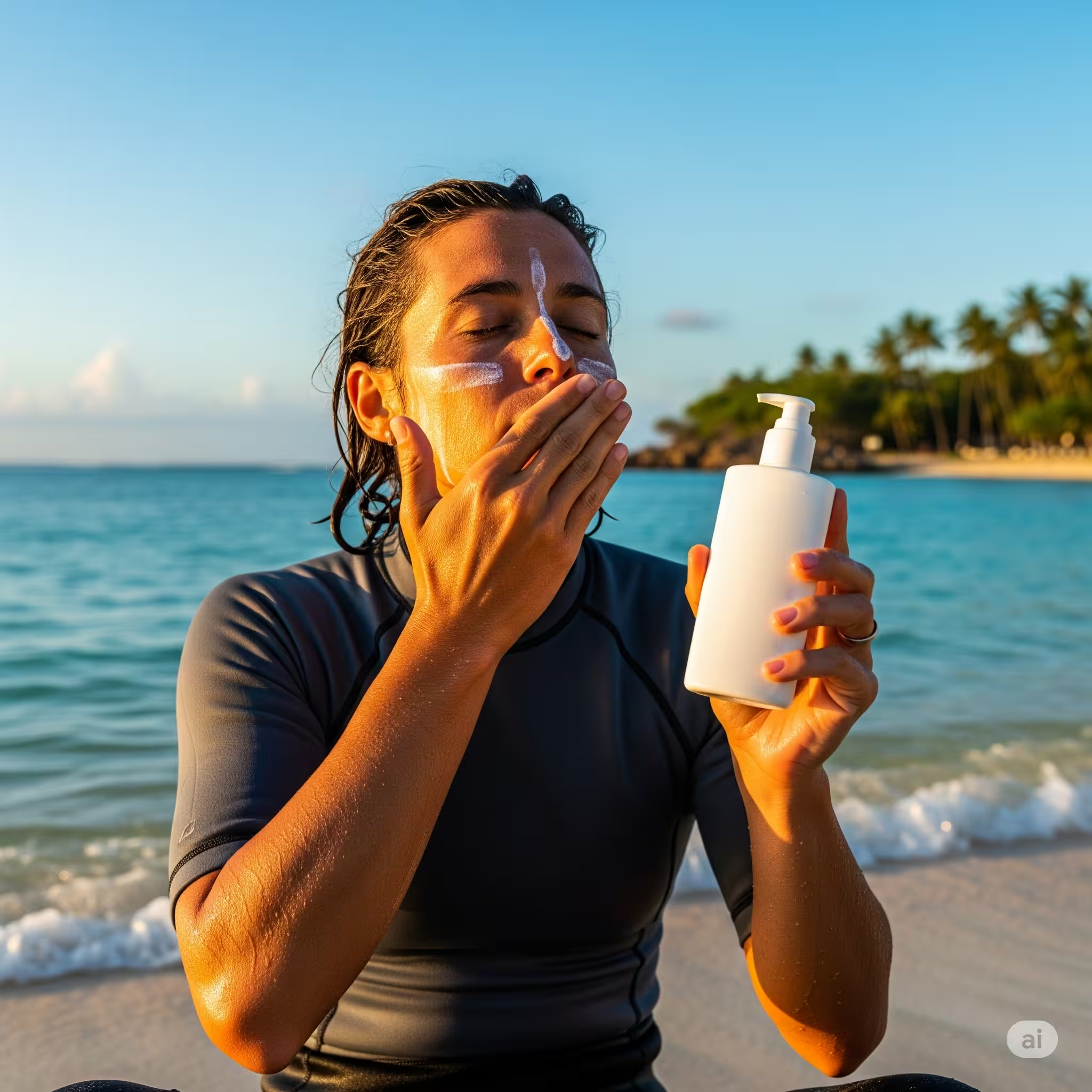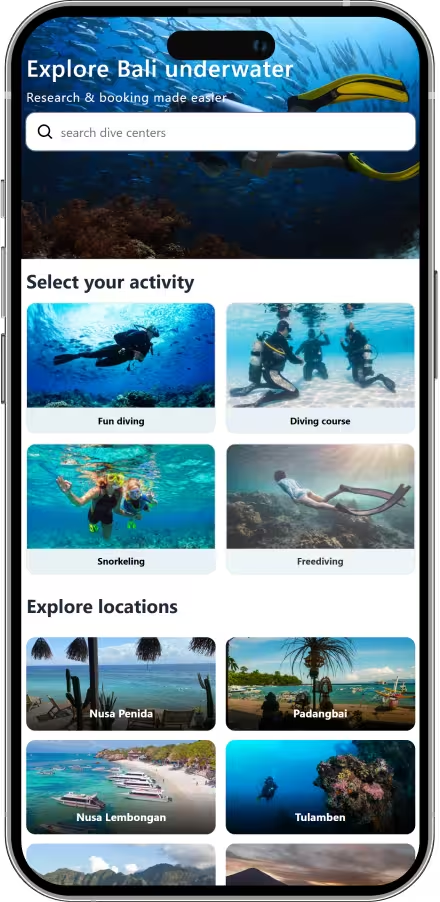The Ultimate Guide to Reef-Safe Sunscreen: Protect Your Skin & the Ocean's Coral Reefs

Introduction
Hey there, ocean lovers! If you’re anything like me, the call of the ocean is irresistible, whether it’s for swimming, snorkeling, or diving. But guess what? While we’re out there enjoying the sun and sea, the sunscreen we choose can have a huge impact on the incredible underwater world we love. It’s a crucial decision, not just for your skin, but for marine life too. The good news is, you absolutely can protect your skin and keep the reefs safe at the same time. Let’s dive into how!
It’s pretty shocking to learn that studies estimate there’s up to 14,000 tonnes of sunscreen dumped into our oceans every single year. This massive amount of chemical runoff creates serious problems, especially in popular tourist spots where diving and snorkeling are common. Even if you don’t swim immediately after applying, a significant portion can wash off and reach the sea later. This is particularly concentrated in popular tourist and diving destinations.
Many conventional sunscreens contain active chemical ingredients that, while protecting your skin, are incredibly toxic to coral reefs and other marine organisms. The main culprits you need to watch out for are:
- Oxybenzone (Benzophenone-3): A major offender, directly linked to coral bleaching, DNA damage, and disrupted coral reproduction.
- Octinoxate (Octyl Methoxycinnamate): Another widespread chemical UV filter that contributes to coral bleaching.
- Octocrylene, Homosalate, 4-Methylbenzylidene Camphor, PABA, Parabens, and Triclosan: These are other harmful chemicals to avoid.
- Nanoparticles: Tiny particles (smaller than 100 nanometres) that can be ingested by marine life and accumulate in their tissues.
- Microplastics: Found in some exfoliating products, these are ingested by marine life and can cause harm throughout the food chain.
The damage these chemicals cause is far-reaching:
- Coral Bleaching & Death: Harmful chemicals cause corals to expel the algae (zooxanthellae) that live in their tissues and provide them with food and color. This leads to the coral turning white, becoming more susceptible to disease, and eventually dying. To learn more about the science of coral conservation, you can visit the NOAA Coral Reef Conservation Program.
- Bioaccumulation: These chemicals don’t just disappear. They build up in the tissues of fish, sea turtles, and marine mammals, potentially causing long-term developmental and reproductive issues throughout the food chain.
I think it’s easy to feel helpless when faced with a problem of this scale, but the good news is that we have the power to make a difference with our consumer choices.
Decoding “Reef-Safe”: What to Look For
The term “reef-safe” can be deceptive. It’s an unregulated marketing term, meaning any brand can use it regardless of its ingredients. It’s up to us, the consumers, to become label detectives.
Here’s what to look for and what to avoid to ensure you’re truly protecting the reef:
- Look for Mineral-Based Sunscreens: The safest active ingredients are non-nano Zinc Oxide and non-nano Titanium Dioxide. These minerals create a physical barrier on your skin that reflects UV rays, rather than absorbing them.
- Insist on “Non-Nano”: The “non-nano” part is super important because these larger particles are less likely to be ingested by coral or other marine life. If a sunscreen rubs in completely clear and doesn’t explicitly state “non-nano,” it likely contains these tiny particles.
- Scan the Ingredient List: Always check the back of the bottle and avoid products that contain the harmful chemicals mentioned above. A quick check of the ingredient list is the best way to ensure you’re making a good choice. To help you navigate the confusing world of sunscreen labels, you can also consult the Environmental Working Group (EWG) Sunscreen Guide, which rates products on safety and effectiveness.
My opinion is that once you know what to look for, choosing a reef-safe sunscreen becomes second nature. It’s a small change with a huge impact.
Top Picks for Your Next Dive Trip
Thankfully, the market for genuinely reef-safe sunscreen is growing! Here are some highly recommended brands that use mineral-based, non-nano ingredients and are great choices for divers:
- Stream2Sea: Founded by a diver and chemist, this brand is extensively tested for aquatic safety and offers a range of options, including tinted ones to help with the “white cast.”
- Badger: A pioneer in natural sunscreens, Badger uses non-nano zinc oxide with minimal ingredients, making it gentle on sensitive skin.
- Thinksport: A consistent leader praised for its robust, water-resistant, broad-spectrum protection, ideal for active individuals and families.
- Raw Elements: Developed by an ocean lifeguard, this brand features a high concentration of non-nano zinc oxide and offers plastic-free packaging options.
- All Good: Features non-nano zinc oxide in a formula noted for being explicitly reef-safe, biodegradable, and gentle on the skin.
Beyond the Bottle: Comprehensive Sun Protection Strategies
Choosing reef-safe sunscreen is a great first step, but it’s just one part of a complete sun protection strategy.
- Prioritize Physical Barriers: This is the most effective and eco-friendly method. Think long-sleeved rash guards (many are made from recycled ocean plastic!), hats, and UV-blocking sunglasses. They don’t wash away and don’t require reapplication.
- Strategic Application: Apply your sunscreen generously 15-30 minutes before sun exposure to allow it to bind to your skin properly and prevent it from washing off. Reapply every two hours, or more often if you’re swimming or sweating.
- Choose the Right Format: Lotions, creams, and sticks are generally better than aerosol sprays. For divers, stick sunscreens are perfect for the face as they are less likely to run into your eyes and interfere with your mask seal.
- Seek Shade: Limit direct sun exposure, especially during peak hours, usually between 10 AM and 4 PM.
- Stay Hydrated: Drinking plenty of fluids, especially when doing multiple dives, helps your skin stay healthy and cope with the sun.
Be an Ocean Advocate!
Your choice of sunscreen is a powerful act of individual responsibility, but our collective efforts can create a tidal wave of change.
- Support Policy Changes: You can support the growing number of regions, like Hawaii, Palau, and Bonaire, that have banned sunscreens containing oxybenzone and octinoxate. These legislative actions are vital for protecting the most vulnerable marine environments.
- Educate Others: Spread the word to friends, family, and your travel companions about the importance of reef-safe products and responsible ocean practices.
- Support Sustainable Businesses: When planning your next underwater adventure, choose dive operators and accommodations that prioritize sustainability. Many are part of organizations like Green Fins, which provide resources for reducing environmental impact. You can support businesses that actively offer reef-safe sunscreen options to their customers.
- Engage in Conservation: Participate in reef cleanups and awareness campaigns. To learn more about how you can support global conservation efforts, explore the World Wildlife Fund (WWF) Ocean Conservation initiatives.
Find Your Next Dive Adventure with TravelTruster!
Ready to put your newfound knowledge to the test? Finding the perfect destination for your next scuba diving adventure, where you can explore a thriving marine ecosystem, has never been easier. Traveltruster is a marketplace where you can discover and book amazing scuba diving experiences around the world. We connect you with trusted dive operators who are committed to sustainable practices and responsible tourism. Find your next adventure on our marketplace!

Find your next dive adventure on traveltruster.com.
Conclusion
Choosing reef-safe sunscreen is more than just a trend; it’s a critical step in preserving the delicate balance of our marine ecosystems. By understanding the science, scrutinizing labels, and adopting a holistic approach to sun protection, we can ensure that our adventures don’t come at the cost of the ocean’s health. Together, we can create a powerful ripple effect, protecting the vibrant coral reefs and marine life we cherish for generations to come.